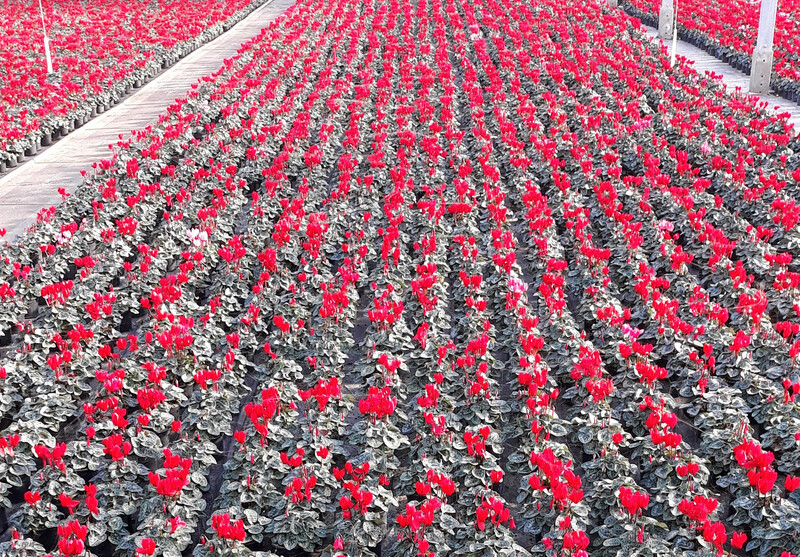Cyclamen: Main pests and control strategies.
There are many species of thrips, but Frankliniella occidentalis, or western flower thrips (WFT), is the most common species found in Cyclamen.
If a biological control strategy is not implemented, both larvae and adult thrips will cause plant damage, by piercing cells on the leaf surface, and sucking out the contents. This causes silver-grey spots on the leaves, with dark green spots of frass, and feeding marks to the flowers.
Their life-cycle is very temperature-dependent. Although thrips can be found at lower temperatures of 10oc, the ideal development conditions are 18oc-26oc; above 35oc, the life-cycle stops. They are also very prolific egg-layers, giving rapid rise to the next generation.
Thrips larvae can also transmit tomato spotted wilt virus (TSWV) and Impatiens Necrotic Spot Virus (INSV).
Cyclamen mite
Cyclamen mite, Phytonemus pallidus, is a very tiny mite, only just visible to the naked eye, and is must commonly found in glasshouses. The mites may be concentrated around the buds, or infest the entire plant, resulting in severely stunted plants, with crinkled leaves.
Control strategies
Macromite
Before pot-spacing, distribute Macro-mite, Macrocheles robustulus, across the plants. This generalist predator will feed on thrips pupae in the growing medium, and any larvae that fall off the foliage.
Before and after pot-spacing, distribute Thripex, Neoseiulus cucumeris, across the plants, at the early stages, before the flower buds have developed, as a preventative thrips control strategy.
At bud development stage, switch to loose Swirski-Mite (Amblyseius swirskii).
This more aggressive species consumes higher numbers of prey, by piercing and sucking out the contents.
Swirski-Mite is also available in the new Ulti-Mite sachet. The application of loose mites to start with gives good overall coverage, and then the addition of these slow release sachets provides longer term control.
Yellow Horiver Traps
Yellow traps are required for monitoring the level of pest present, will aid the calculation of the correct rates of natural enemies required.
For further information please contact your local Koppert consultant.
